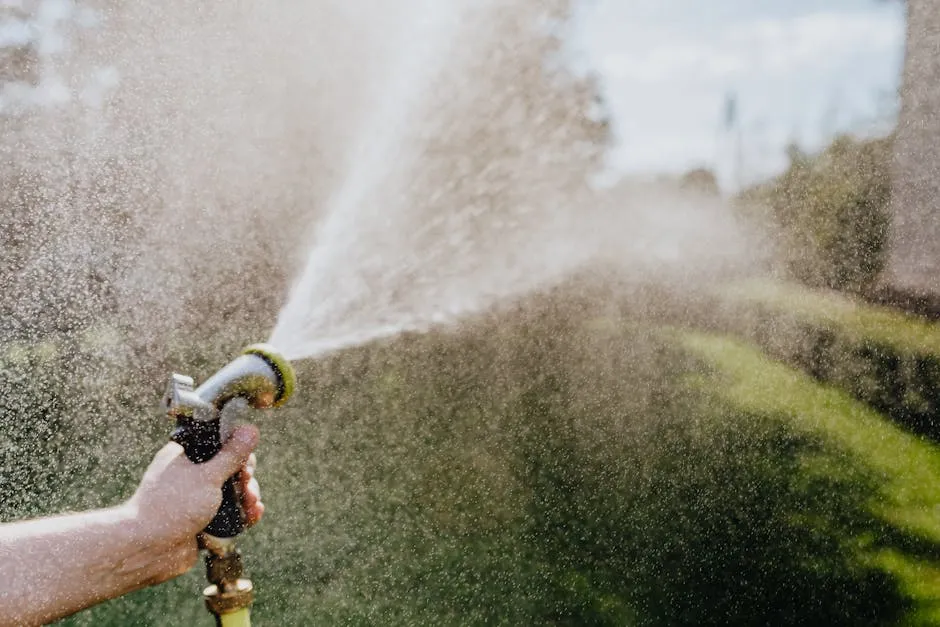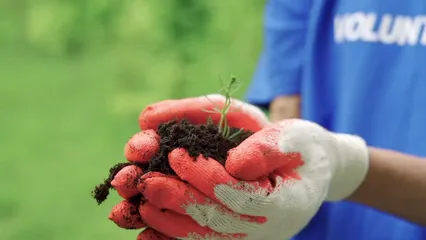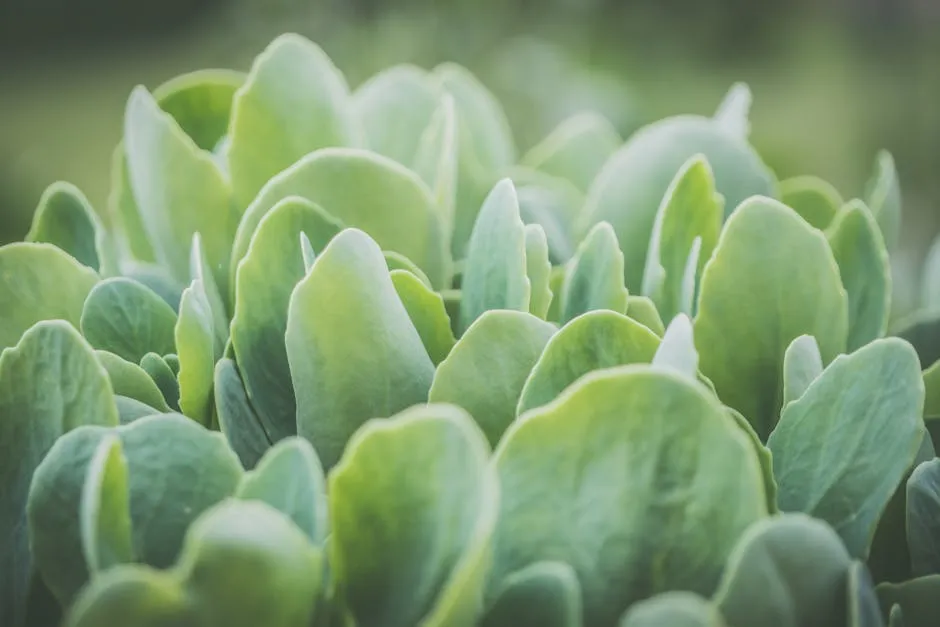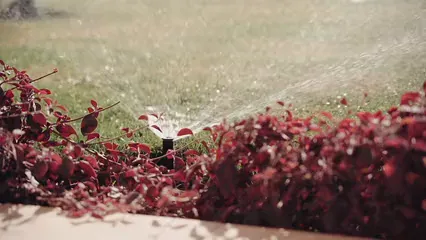

Drip Irrigation Systems: A Comprehensive Guide to Efficient Water Management
One major benefit of drip tape is its ability to reduce water usage significantly. It minimizes evaporation and runoff, ensuring plants receive the right amount of moisture. Ideal use cases include annual crops and areas with limited water resources. Overall, drip tape is an economical choice for efficient irrigation practices. For more on water conservation techniques, check out this guide on how to design a rain garden for water conservation.
Drip tape is an effective method for reducing water usage in irrigation practices. Learn more about water conservation techniques.

Micro-Spray Heads
Micro-spray heads offer a versatile alternative in drip irrigation systems. Unlike traditional emitters, these devices spray water in a fine mist over a broader area. This feature makes them suitable for various applications, including gardens and large landscapes.
One of their key advantages is the ability to apply water uniformly, which is crucial for plant health. Micro-spray heads are especially beneficial for areas with uneven terrain, as they can cover irregular shapes effectively. They also help reduce weed growth by keeping surrounding soil dry. These heads are perfect for homeowners and farmers looking for flexibility in their irrigation methods. Don’t forget to grab a Micro-Spray Head Set to enhance your watering game!

Advantages of Drip Irrigation
Water and Nutrient Efficiency
Drip irrigation stands out for its ability to conserve water and nutrients. By delivering water directly to the root zone, it minimizes wastage significantly. Studies show that this method can save up to 70% more water compared to traditional irrigation techniques. Additionally, it reduces nutrient runoff, which can contaminate nearby water sources.
This targeted approach not only conserves resources but also enhances soil health. Farmers using drip irrigation experience lower costs and improved crop vitality. With such impressive efficiency rates, it’s no wonder this method is gaining popularity in sustainable agriculture. For further insights into improving soil health, refer to our article on composting basics for improving soil health.
Drip irrigation enhances soil health and conserves resources effectively. Discover more about composting for soil health.

Crop Yield Improvement
Drip irrigation improves crop yields by ensuring precise watering. By providing a consistent water supply, plants can grow healthier and stronger. Many farmers report increased productivity when using this system. For example, a case study revealed a 30% yield increase in tomato crops when switching to drip irrigation.
Farmers appreciate how this method tailors water delivery to each plant’s needs. This precision leads to higher quality produce and better market prices. With these advantages, it’s clear that drip irrigation can transform agricultural practices for the better. If you’re interested in enhancing your soil’s productivity, consider using a Plant Fertilizer Spikes to give your plants that extra boost!

Environmental Benefits
Drip irrigation systems offer significant environmental advantages. One of the key benefits is reduced soil erosion. By delivering water directly to the plant roots, these systems minimize surface runoff. This targeted approach keeps the soil intact and prevents nutrient loss. Additionally, drip irrigation lowers energy consumption. Since it operates at lower pressures, it requires less energy compared to traditional irrigation methods. This not only saves money but also reduces the carbon footprint associated with water delivery. Overall, the environmental impact of drip irrigation contributes to more sustainable agricultural practices, making it a smart choice for eco-conscious farmers.
Disadvantages of Drip Irrigation
Initial Costs and Maintenance
While drip irrigation systems have many benefits, they come with higher initial costs. Installation can be pricey due to the need for specialized equipment and materials. Many farmers may hesitate because of this upfront investment. Maintenance is another consideration. Regular upkeep is essential to keep the system functioning effectively. Clogging is a common issue, especially if water quality is poor. Filters and emitters require routine checks to prevent blockages. This ongoing maintenance can add to the overall cost and effort involved in using drip irrigation.
To help with maintenance, consider investing in an Irrigation Filter. It’s like a bouncer for your irrigation system, keeping out the unwanted debris that could cause trouble!

Limitations
Drip irrigation isn’t suitable for all crops and conditions. Certain plants, especially those with deep root systems, may not benefit as much from this method. Additionally, soil compatibility plays a significant role. Sandy soils may drain too quickly, while clay soils can retain too much water. This can lead to uneven moisture distribution, affecting plant health. Furthermore, in areas with high weed pressures, drip irrigation might not suppress weeds effectively. Understanding these limitations is crucial for farmers considering this irrigation approach.
Installation and Maintenance of Drip Irrigation Systems
Installation Guidelines
Installing a drip irrigation system involves several steps to ensure effectiveness. First, assess your garden layout and choose the right components. Consider the types of plants and their water needs. Next, plan the layout, determining where the mainlines and drip lines will run. Ensure that the water source is easily accessible.
Begin by laying the mainline tubing along the designated path. Connect it to the water source, using a pressure regulator if necessary. Then, attach emitters or drip tape to the mainline, spacing them according to plant requirements. Once everything is connected, conduct a test run to check for leaks and proper water flow.
For maintenance, regularly inspect the system for clogs and replace any damaged parts. Flushing the system periodically will help maintain efficiency. Following these guidelines will help you establish a successful and efficient drip irrigation system for your garden or farm.

Maintenance Tips
To keep your drip irrigation system running smoothly, regular maintenance is key. Start by checking for clogs in the emitters and filters every few weeks. Clean or replace any components that show signs of wear. Flushing the system at the start and end of each season will help clear out debris. Ensure that the tubing is intact and free from leaks. Adjust the system as needed to accommodate plant growth. Finally, monitor the water pressure; it should remain consistent for optimal performance. Following these steps will enhance the longevity and efficiency of your system. For seasonal maintenance tips, refer to our guide on seasonal maintenance tips for self-watering container gardens in fall 2024.
Regular maintenance is crucial for the efficiency of your drip irrigation system. Check out seasonal maintenance tips for your garden.

Economic Considerations
Cost vs. Benefits
Investing in a drip irrigation system can yield significant returns for farmers. While the initial installation may seem high, the long-term savings make it worthwhile. Drip irrigation can reduce water usage by up to 70%, leading to lower utility bills. Additionally, it minimizes the need for fertilizers, as nutrients are delivered directly to plant roots. This targeted approach cuts down on labor costs, freeing up time for other tasks. Farmers often see a quicker payback period due to increased crop yields. Ultimately, the economic benefits of drip irrigation can make it a smart choice for sustainable farming.
And if you’re looking to get started with planting, a Seed Starter Kit could be just what you need! Start your plants off right and watch them grow like they’re in a botanical beauty contest.

Future Trends in Drip Irrigation
Technological Advancements
The future of drip irrigation is bright, thanks to recent technological innovations. Smart irrigation systems are becoming increasingly popular. These systems use sensors to monitor soil moisture and weather conditions, optimizing water delivery. This technology not only conserves water but also boosts crop health. Additionally, advancements in materials make drip tubing more durable and resistant to UV damage. As sustainability becomes a priority, the integration of renewable energy sources, like solar power, is also gaining traction. Overall, the evolution of drip irrigation technology promises to enhance efficiency and effectiveness in agricultural practices.
To stay on top of your gardening game, consider a Garden Soil Moisture Meter. It’s like having a personal assistant for your plants, making sure you never underwater or overwater them again!

Conclusion
Drip irrigation systems play a crucial role in modern agriculture. They provide efficient water management, especially in areas facing water scarcity. By delivering water directly to plant roots, these systems not only conserve water but also improve crop yields.
Adopting drip irrigation can lead to significant benefits, including reduced water costs and enhanced soil health. If you’re considering ways to optimize your farming practices, it’s time to explore this technology.
Research the options available or consult with irrigation experts to find the best solution for your needs. Your crops will thank you! And for those looking to add a little flair to their garden, solar garden lights might just be the perfect touch. Check out these Solar Garden Lights to illuminate your garden at night!

FAQs
What crops are best suited for drip irrigation?
Drip irrigation is versatile and can accommodate many crops. It works well for vegetables, fruits, and even tree crops. For instance, tomatoes, cucumbers, and strawberries thrive with this system. The key is choosing the right setup based on your specific crops and field conditions.
How does drip irrigation save water compared to other methods?
Drip irrigation is highly efficient, achieving up to 95% water use efficiency. Traditional methods like flood irrigation may waste 60-70% of water through runoff and evaporation. By delivering water directly to the roots, drip systems minimize waste, making them ideal for water conservation.
What are the maintenance requirements for a drip irrigation system?
Maintenance tasks include regular checks for clogs in emitters and filters. Cleaning these components should occur every few weeks, especially in areas with poor water quality. Flushing the system at the start and end of each season ensures optimal performance and longevity.
Is drip irrigation suitable for large-scale farming?
Yes, drip irrigation systems are scalable. They can effectively manage water for large operations while reducing labor costs. Many large farms have adopted this technology for its ability to enhance efficiency and crop yields, making it a cost-effective choice.
Can drip irrigation systems be automated?
Absolutely! Many drip irrigation systems offer automation options. These can include timers and moisture sensors that adjust water delivery based on soil needs. Automation reduces labor and ensures that plants receive the right amount of water consistently.
Please let us know what you think about our content by leaving a comment down below!
Thank you for reading till here 🙂
All images from Pexels
Introduction
Drip irrigation systems revolutionize how we manage water in agriculture. These systems deliver water directly to plant roots, ensuring efficient hydration. The main benefits? Significant water savings and enhanced crop yields. This guide will help you understand the ins and outs of drip irrigation, from its basic components to its advantages in sustainable farming.
If you’re looking to make your gardening life easier, consider investing in a Drip Irrigation System Kit. It’s like giving your plants a spa day every day! With this system, you’ll be saving water and time while your plants flourish like they just hit the gym.

Summary and Overview
Drip irrigation systems are networks designed to supply water directly to plant roots. They consist of valves, pipes, tubing, and emitters that control water flow. This method is essential for sustainable agriculture, especially in areas facing water shortages. Historically, drip irrigation has evolved from ancient techniques to modern technology, significantly improving efficiency. Today, advancements continue to enhance its effectiveness and accessibility for farmers worldwide. Understanding these systems is crucial for anyone looking to optimize water usage in their agricultural practices.
To keep your system running smoothly, don’t forget about the Water Pressure Regulator. This little gadget ensures that your plants aren’t drowning in a flood of water while still getting the hydration they need. It’s like the lifeguard of your garden!

What is Drip Irrigation?
Definition and Working Principle
Drip irrigation is a precise watering method that delivers water directly to the root zones of plants. This system works by using a network of pipes and emitters designed to release water slowly. It operates on a simple principle: minimal evaporation and efficient use of resources. By targeting the roots, it conserves water and reduces waste. Compared to traditional methods, drip irrigation boasts an impressive 90-95% efficiency rate. This means less water is lost to runoff or evaporation, making it a smart choice for farmers looking to maximize their yields while conserving resources.
Types of Drip Irrigation Systems
Emitter Systems
Emitter systems are among the most common drip irrigation setups. They consist of small hoses equipped with emitters that release water at a controlled rate. These systems are versatile, making them suitable for various crops, from vegetables to trees. Different emitter types are available, including pressure-compensating and non-pressure-compensating options. Pressure-compensating emitters maintain a consistent flow rate regardless of pressure fluctuations, ensuring even watering across the field. This adaptability makes emitter systems a popular choice for farmers aiming to improve efficiency and crop health.
Speaking of efficiency, consider adding Pressure-Compensating Emitters to your setup. They ensure that each plant gets its fair share of water, making sure no one feels left out at the garden party!
Drip Tape
Drip tape is a thin, flexible tube designed for irrigation. It features evenly spaced emitters that release water directly to the soil. This method is particularly effective for row crops and vegetable gardens. Farmers love drip tape for its simplicity and efficiency. It can be laid on the soil surface or buried slightly underground.
One major benefit of drip tape is its ability to reduce water usage significantly. It minimizes evaporation and runoff, ensuring plants receive the right amount of moisture. Ideal use cases include annual crops and areas with limited water resources. Overall, drip tape is an economical choice for efficient irrigation practices. For more on water conservation techniques, check out this guide on how to design a rain garden for water conservation.
Drip tape is an effective method for reducing water usage in irrigation practices. Learn more about water conservation techniques.

Micro-Spray Heads
Micro-spray heads offer a versatile alternative in drip irrigation systems. Unlike traditional emitters, these devices spray water in a fine mist over a broader area. This feature makes them suitable for various applications, including gardens and large landscapes.
One of their key advantages is the ability to apply water uniformly, which is crucial for plant health. Micro-spray heads are especially beneficial for areas with uneven terrain, as they can cover irregular shapes effectively. They also help reduce weed growth by keeping surrounding soil dry. These heads are perfect for homeowners and farmers looking for flexibility in their irrigation methods. Don’t forget to grab a Micro-Spray Head Set to enhance your watering game!

Advantages of Drip Irrigation
Water and Nutrient Efficiency
Drip irrigation stands out for its ability to conserve water and nutrients. By delivering water directly to the root zone, it minimizes wastage significantly. Studies show that this method can save up to 70% more water compared to traditional irrigation techniques. Additionally, it reduces nutrient runoff, which can contaminate nearby water sources.
This targeted approach not only conserves resources but also enhances soil health. Farmers using drip irrigation experience lower costs and improved crop vitality. With such impressive efficiency rates, it’s no wonder this method is gaining popularity in sustainable agriculture. For further insights into improving soil health, refer to our article on composting basics for improving soil health.
Drip irrigation enhances soil health and conserves resources effectively. Discover more about composting for soil health.

Crop Yield Improvement
Drip irrigation improves crop yields by ensuring precise watering. By providing a consistent water supply, plants can grow healthier and stronger. Many farmers report increased productivity when using this system. For example, a case study revealed a 30% yield increase in tomato crops when switching to drip irrigation.
Farmers appreciate how this method tailors water delivery to each plant’s needs. This precision leads to higher quality produce and better market prices. With these advantages, it’s clear that drip irrigation can transform agricultural practices for the better. If you’re interested in enhancing your soil’s productivity, consider using a Plant Fertilizer Spikes to give your plants that extra boost!

Environmental Benefits
Drip irrigation systems offer significant environmental advantages. One of the key benefits is reduced soil erosion. By delivering water directly to the plant roots, these systems minimize surface runoff. This targeted approach keeps the soil intact and prevents nutrient loss. Additionally, drip irrigation lowers energy consumption. Since it operates at lower pressures, it requires less energy compared to traditional irrigation methods. This not only saves money but also reduces the carbon footprint associated with water delivery. Overall, the environmental impact of drip irrigation contributes to more sustainable agricultural practices, making it a smart choice for eco-conscious farmers.
Disadvantages of Drip Irrigation
Initial Costs and Maintenance
While drip irrigation systems have many benefits, they come with higher initial costs. Installation can be pricey due to the need for specialized equipment and materials. Many farmers may hesitate because of this upfront investment. Maintenance is another consideration. Regular upkeep is essential to keep the system functioning effectively. Clogging is a common issue, especially if water quality is poor. Filters and emitters require routine checks to prevent blockages. This ongoing maintenance can add to the overall cost and effort involved in using drip irrigation.
To help with maintenance, consider investing in an Irrigation Filter. It’s like a bouncer for your irrigation system, keeping out the unwanted debris that could cause trouble!

Limitations
Drip irrigation isn’t suitable for all crops and conditions. Certain plants, especially those with deep root systems, may not benefit as much from this method. Additionally, soil compatibility plays a significant role. Sandy soils may drain too quickly, while clay soils can retain too much water. This can lead to uneven moisture distribution, affecting plant health. Furthermore, in areas with high weed pressures, drip irrigation might not suppress weeds effectively. Understanding these limitations is crucial for farmers considering this irrigation approach.
Installation and Maintenance of Drip Irrigation Systems
Installation Guidelines
Installing a drip irrigation system involves several steps to ensure effectiveness. First, assess your garden layout and choose the right components. Consider the types of plants and their water needs. Next, plan the layout, determining where the mainlines and drip lines will run. Ensure that the water source is easily accessible.
Begin by laying the mainline tubing along the designated path. Connect it to the water source, using a pressure regulator if necessary. Then, attach emitters or drip tape to the mainline, spacing them according to plant requirements. Once everything is connected, conduct a test run to check for leaks and proper water flow.
For maintenance, regularly inspect the system for clogs and replace any damaged parts. Flushing the system periodically will help maintain efficiency. Following these guidelines will help you establish a successful and efficient drip irrigation system for your garden or farm.

Maintenance Tips
To keep your drip irrigation system running smoothly, regular maintenance is key. Start by checking for clogs in the emitters and filters every few weeks. Clean or replace any components that show signs of wear. Flushing the system at the start and end of each season will help clear out debris. Ensure that the tubing is intact and free from leaks. Adjust the system as needed to accommodate plant growth. Finally, monitor the water pressure; it should remain consistent for optimal performance. Following these steps will enhance the longevity and efficiency of your system. For seasonal maintenance tips, refer to our guide on seasonal maintenance tips for self-watering container gardens in fall 2024.
Regular maintenance is crucial for the efficiency of your drip irrigation system. Check out seasonal maintenance tips for your garden.

Economic Considerations
Cost vs. Benefits
Investing in a drip irrigation system can yield significant returns for farmers. While the initial installation may seem high, the long-term savings make it worthwhile. Drip irrigation can reduce water usage by up to 70%, leading to lower utility bills. Additionally, it minimizes the need for fertilizers, as nutrients are delivered directly to plant roots. This targeted approach cuts down on labor costs, freeing up time for other tasks. Farmers often see a quicker payback period due to increased crop yields. Ultimately, the economic benefits of drip irrigation can make it a smart choice for sustainable farming.
And if you’re looking to get started with planting, a Seed Starter Kit could be just what you need! Start your plants off right and watch them grow like they’re in a botanical beauty contest.

Future Trends in Drip Irrigation
Technological Advancements
The future of drip irrigation is bright, thanks to recent technological innovations. Smart irrigation systems are becoming increasingly popular. These systems use sensors to monitor soil moisture and weather conditions, optimizing water delivery. This technology not only conserves water but also boosts crop health. Additionally, advancements in materials make drip tubing more durable and resistant to UV damage. As sustainability becomes a priority, the integration of renewable energy sources, like solar power, is also gaining traction. Overall, the evolution of drip irrigation technology promises to enhance efficiency and effectiveness in agricultural practices.
To stay on top of your gardening game, consider a Garden Soil Moisture Meter. It’s like having a personal assistant for your plants, making sure you never underwater or overwater them again!

Conclusion
Drip irrigation systems play a crucial role in modern agriculture. They provide efficient water management, especially in areas facing water scarcity. By delivering water directly to plant roots, these systems not only conserve water but also improve crop yields.
Adopting drip irrigation can lead to significant benefits, including reduced water costs and enhanced soil health. If you’re considering ways to optimize your farming practices, it’s time to explore this technology.
Research the options available or consult with irrigation experts to find the best solution for your needs. Your crops will thank you! And for those looking to add a little flair to their garden, solar garden lights might just be the perfect touch. Check out these Solar Garden Lights to illuminate your garden at night!

FAQs
Please let us know what you think about our content by leaving a comment down below!
Thank you for reading till here 🙂
All images from Pexels



